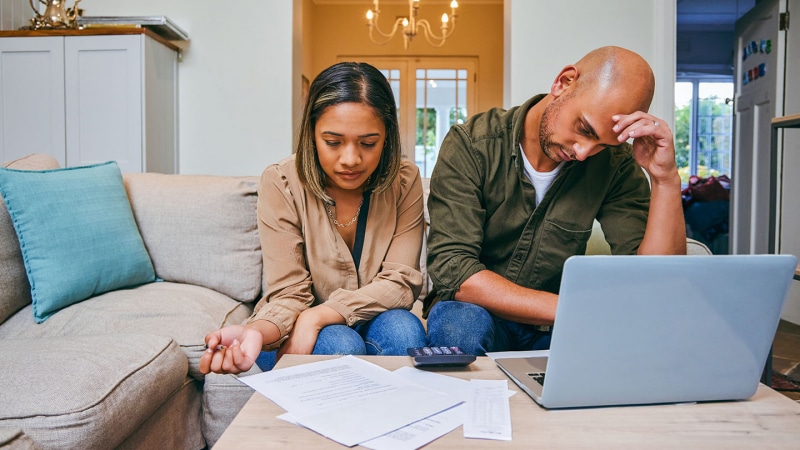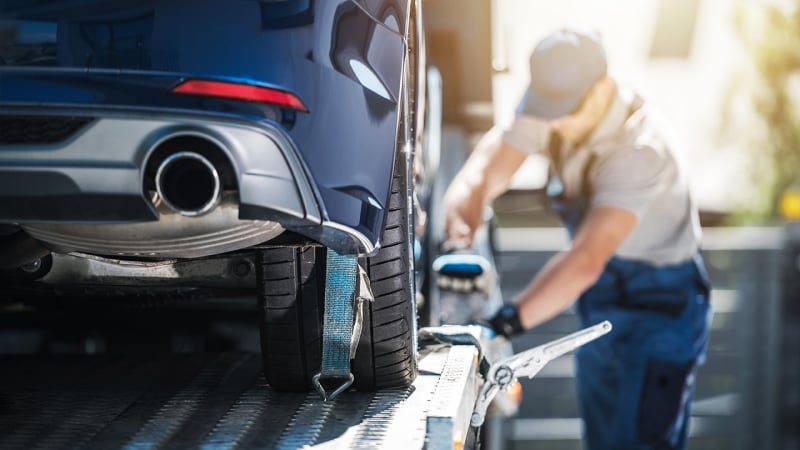Voluntary car repossession: What is it and how does it work

Quick insights
- Vehicle repossession can be voluntary or involuntary, but both scenarios can arise when monthly car payments become unmanageable.
- Your lender may offer a voluntary repossession option if you explain that you can no longer afford your financed car.
- Voluntary repossession may help with your financial situation but can still cost you money and affect your credit after the process is complete.
Voluntary repossession could happen after you contact a lender and inform them you won’t be able to make the monthly payments. Depending on the situation, a lender could offer alternatives, but voluntary repossession might be the right choice for you.
What is voluntary car repossession?
Voluntary repossession is when you give a financed vehicle back to the lender after recognizing you cannot make the payments anymore. You can get more specific information about the process from your lender. If you stop making car payments, the lender can repossess the vehicle involuntarily, which means locating your car and taking possession of it right then and there.
How does voluntary repossession work?
Voluntary car repossession generally begins with having a candid conversation with your lender. You can discuss your specific options and ask if any options are available, including arranging the “surrender.”
1. Talk to your lender
Lenders aren’t companies who simply want their money on time. Speaking with your lender, especially before missing monthly payments, could reveal helpful options. As soon as you think you might miss a car payment or submit one late, contact your lender. You won’t know your options without first reaching out to your lender.
2. Discuss the possible options
Lenders might work with their customers who communicate their financial situations and needs. For example, those who are a victim of natural disasters may receive extended grace periods or temporary deferments. A lender may delay a due date, revise the payment schedule or offer another option if it will help you continue to make your car payments.
3. Arrange when and how you’ll surrender the vehicle
If you and your lender don’t agree on an option that helps you make payments, voluntary repossession could be on the table. Some more discussion and paperwork may be required, then the physical handover can occur. At that time, the lender takes possession of the vehicle before potentially selling it to recuperate some or all of the money lent.
What happens after voluntary car repossession
Lenders either keep repossessed cars or sell them, both being attempts to cover the debt that’s no longer being financed. In some states, when the lender keeps a repossessed vehicle, you might be able to reinstate your loan. In this scenario, you’d typically pay the past-due amount and additional fees or expenses set by the lender.
When sold, a repossessed car could go to a public auction or a private seller. Some states require lenders to inform you of their action, and you may have a chance to rebuy the vehicle. For example, you could bid on it at the public auction.
How a voluntary repossession could affect your finances
After a voluntary car repossession, your credit score could go down, and you may still owe money.
You may owe money
After surrendering a vehicle, you could stop financing it but might still owe money to the lender. The new amount due is normally the difference between the outstanding loan balance and what the lender receives from selling the vehicle. This is called the “deficiency.”
Your credit could be impacted
Lenders normally report their borrower’s activity like payment history for better or worse. Late payments, for example, could cause your credit score to decrease. In addition, if any negative items appear on your credit report, they could impact interest rates and eligibility for new loans down the road.
You can monitor your credit score and look out for changes when you enroll in Chase Credit Journey®, a free online tool anyone, including non-Chase cardmembers, can use.
Alternatives to voluntary repossession
Here are some things you could consider before going through with a voluntary car repossession:
- Sell the car: A car’s value is based on many factors, and you may be able to use the proceeds of a sale to meet your loan obligation. This could eliminate your monthly payments and let you research a more affordable car.
- Try negotiating with your lender: Certain lenders could be willing to change your original loan terms, including the due dates or overall schedule. Ask about options that could help make your payments affordable again. Get any changes in your loan terms in writing.
- Explore refinancing: Your current lender or a new one may allow you to refinance a loan that you can’t afford anymore. A lower interest rate or longer repayment period could help make your monthly payments more manageable. Just remember that the loan term affects the total interest you pay—a longer term means more interest accrued over the life of the loan.
In conclusion
Speaking to your lender can be helpful as soon as you think you won’t be able to make a payment. Alternatives to voluntary surrender might be available if you’re in a temporary bind. Otherwise, when you know financing your car is not possible anymore, you could also explore refinancing or selling it.
After speaking with a lender, you still might decide that voluntary repossession is in your best interest, not just a last resort. Before proceeding, it can help to figure out exactly how much you’ll owe after the surrender.



